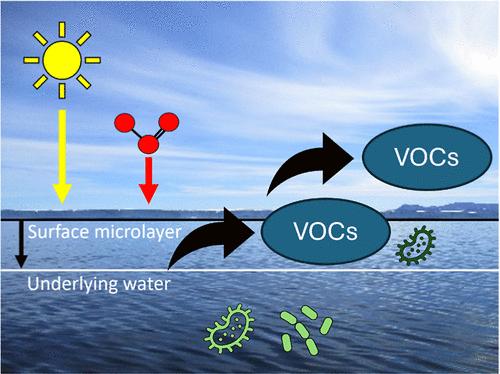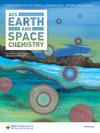Abiotic Emission of Volatile Organic Compounds from the Ocean Surface: Relationship to Seawater Composition
IF 2.9
3区 化学
Q2 CHEMISTRY, MULTIDISCIPLINARY
引用次数: 0
Abstract
An important goal in marine atmospheric chemistry is to determine the impact of the surface ocean on the overlying marine boundary layer in terms of the ocean’s potential to release volatile organic compounds (VOCs) that may impact atmospheric oxidizing capacity and aerosol growth. In addition to direct biogenic production of VOCs that are eventually emitted to the atmosphere, abiotic mechanisms that produce VOCs include direct or sensitized photochemistry and oxidation reactions initiated by gas phase oxidants. In this laboratory study, we use proton-transfer-reaction mass spectrometry to measure the emission fluxes resulting from both UV irradiation and ozone oxidation of Arctic surface microlayer water and the underlying bulk seawater. Under our experimental conditions, both mechanisms lead to comparable VOC emission fluxes, which scale closely with the total and dissolved organic carbon content of the sample. However, the composition of the seawater sample can strongly affect the emission fluxes of specific molecules. For example, nonanal fluxes from oxidation correlate closely with the phytoplankton abundance in the samples, indicating that unsaturated lipids may be the substrate. Conversely, the best predictor for the nitrogenated VOC flux under irradiation conditions is photosynthetic prokaryotes (i.e., cyanobacteria) abundance. Similar studies in a wider range of environments, ideally conducted in the field, will better constrain the importance of these abiotic processes to global ocean-to-atmosphere fluxes.

海洋表面挥发性有机化合物的非生物排放:与海水成分的关系
海洋大气化学的一个重要目标是确定表层海洋对上覆海洋边界层的影响,即海洋释放挥发性有机化合物(VOC)的潜力,这可能会影响大气氧化能力和气溶胶的增长。除了直接生物生成最终排放到大气中的挥发性有机化合物外,产生挥发性有机化合物的非生物机制还包括直接或敏化光化学作用以及气相氧化剂引发的氧化反应。在这项实验室研究中,我们利用质子转移反应质谱法测量了北极表层微层水和底层海水在紫外线照射和臭氧氧化作用下产生的排放通量。在我们的实验条件下,这两种机制产生的挥发性有机化合物排放通量具有可比性,并与样本中的总有机碳含量和溶解有机碳含量密切相关。不过,海水样本的成分会对特定分子的排放通量产生很大影响。例如,氧化产生的壬醛通量与样本中浮游植物的丰度密切相关,表明不饱和脂质可能是底物。相反,辐照条件下含氮挥发性有机化合物通量的最佳预测指标是光合原核生物(即蓝藻)的丰度。在更广泛的环境中进行类似的研究,最好是在实地进行,这将更好地限制这些非生物过程对全球海洋到大气通量的重要性。
本文章由计算机程序翻译,如有差异,请以英文原文为准。
求助全文
约1分钟内获得全文
求助全文
来源期刊

ACS Earth and Space Chemistry
Earth and Planetary Sciences-Geochemistry and Petrology
CiteScore
5.30
自引率
11.80%
发文量
249
期刊介绍:
The scope of ACS Earth and Space Chemistry includes the application of analytical, experimental and theoretical chemistry to investigate research questions relevant to the Earth and Space. The journal encompasses the highly interdisciplinary nature of research in this area, while emphasizing chemistry and chemical research tools as the unifying theme. The journal publishes broadly in the domains of high- and low-temperature geochemistry, atmospheric chemistry, marine chemistry, planetary chemistry, astrochemistry, and analytical geochemistry. ACS Earth and Space Chemistry publishes Articles, Letters, Reviews, and Features to provide flexible formats to readily communicate all aspects of research in these fields.
 求助内容:
求助内容: 应助结果提醒方式:
应助结果提醒方式:


